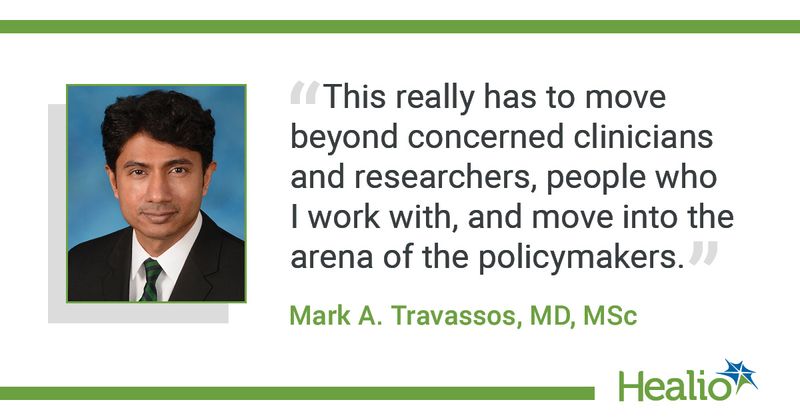Children not getting ‘essential’ sickle cell treatment in sub-Saharan Africa
Children with sickle cell disease living in sub-Saharan Africa do not have access to an “essential” treatment, experts wrote this week in The New England Journal of Medicine.
Mark A. Travassos, MD, MSc, a pediatric infectious diseases specialist and associate professor of pediatrics at the University of Maryland School of Medicine, co-authored the perspective with Albert E. Zhou, MD, PhD, also from the University of Maryland School of Medicine.

Travassos told Healio that the perspective was inspired by his trips to Mali during the rainy season to treat local children for malaria and hemoglobinopathies, most prominently sickle cell disease.
“What we see in our work [are] the disparities of care that are out there,” Travassos said. “Children in the U.S. have benefited for over 2 decades from a very essential medication called hydroxyurea that really allows for addressing some of the basic problems with sickle cell disease. And that medication is just not available where we work in West Africa.”
He said it has been “very encouraging” to see hydroxyurea’s effectiveness proven in studies based in sub-Saharan African settings.
“It’s very exciting to think that this medication is appropriate and effective for children across sub-Saharan Africa,” Travassos said. “But the frustrating thing is seeing that there's no mechanism of delivery to provide for that medication and provide for the kind of monitoring and oversight to give that medication to these children.”
Although people with the disease in the U.S. are expected to live into their 40s or beyond with the use of hydroxyurea, about 236,000 infants are born with sickle cell disease in sub-Saharan Africa each year, and up to 90% of them die during childhood, according to Travassos and Zhou. Although clinicians in the area have tried to introduce the drug to their patients, success has been limited “owing to a dearth of clinicians in rural settings, insufficient equipment for routine blood monitoring, and relatively high costs,” Travassos and Zhou wrote.
“We have medication that is effective for treating a childhood illness, and yet right now we are certainly not providing it to children in the area of greatest need,” Travassos said. “There are so many more children with sickle cell disease in sub-Saharan Africa than we treat here in the U.S., and those children, unfortunately, are dying preventable deaths. A structured program can actually address that kind of gaping need for this medication.”
Travassos noted that the U.S. has funded such a program in the past.
“We could use that same structure to support these children who are dying these preventable deaths,” Travassos said. “The ideal outcome would be mobilization on a large scale, at the federal government level and beyond that, to address and really prevent the shortage and childhood deaths. It would have to be more of a large-scale realization so that we can affect change — similar, I think, to 20 years ago, when we realized we could effectively treat and manage HIV, and that Africans could and should be treated in the same way that we treat people in industrialized countries, or diseases.”
He added that the real push would have to come from those outside medicine.
“This really has to move beyond concerned clinicians and researchers, people who I work with, and move into the arena of the policymakers, and that's really one of the main hopes with this piece,” Travassos said. “We aimed to bring attention of this need to the kind of policymakers, political forces, governmental forces and nongovernmental forces that can really do this kind of large-scale change and understand that at the very ground level, there's an acute need and a desperation for it that they can immediately address with that kind of program.”
Reference:
Zhou A, et al. N Engl J Med. 2022;doi:10.1056/NEJMp2201763.
